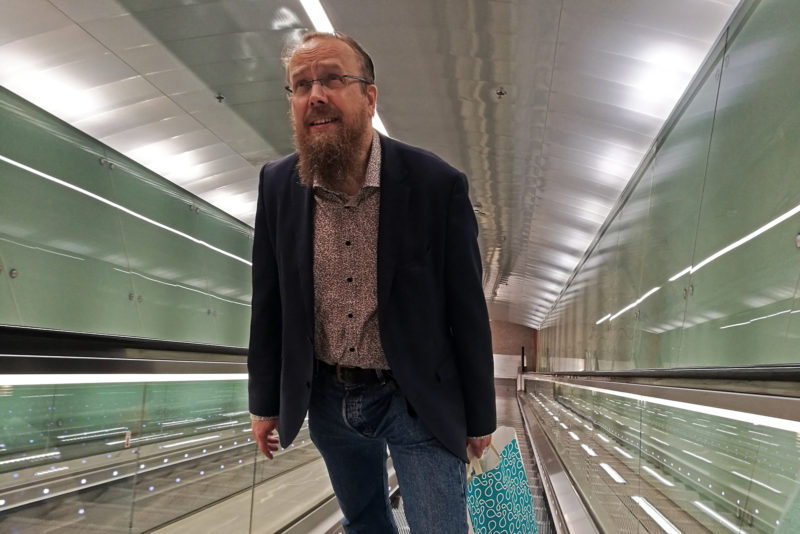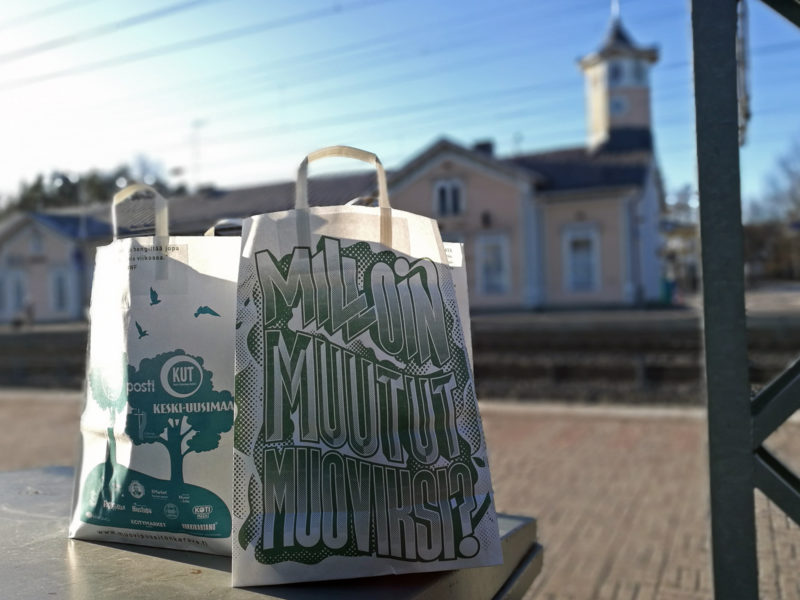‘The forest is a wonderful horn of plenty’ – the startup entrepreneur emphasizes the added value of biomass

There is not enough biomass in the world to replace all fossil raw material. Something more is needed, but biomass still holds an important role, says Esa Torniainen, a Finnish forest sector innovator and startup entrepreneur.
‘You can find the good solutions if you bear in mind the profitability and sustainability of production,’ says Torniainen, who is the Chief Business Development Officer of Paptic Ltd.
One of the promising start-up companies in the Finnish forest sector, Paptic aims at producing wood-based alternatives to products made of fossil raw materials, such as flexible packaging, plastic carrier bags and mailers.
Torniainen has a Master’s degree in graphic technology. Among other places, he has been employed as researcher in the company now known as Metsä Board and in the research company KCL, owned by the forest industry, studying such things as the commercialisation of digital printing papers and the development of new packaging materials.
Torniainen does not always find it easy to promote the philosophy behind Paptic’s products. In general, people view the use of biomasses as something good, but as regards Europe, the use of wood is more usual in the Nordic countries.
‘In other parts of Europe, people have no difficulty with plastics made of starch from agricultural crops, but innovations based on the use of wood are often completely unknown, and if people do know about them, they may even be shocked because it means that trees must be felled,’ Torniainen says.
In actual fact, the use of forest biomass from a sustainably managed forest is never any worse than using biomass from arable crops and can be considerably more advantageous. ‘But how can we make people see this?’ Torniainen asks.
Is there enough biomass?
Torniainen prefers not to speak of whether there is enough biomass on a general level. This depends on what we want to use it for.
‘There are different kinds of biomass, just as there are different purposes for using them. Sustainability is always dependent on the overall picture,’ Torniainen says.

The two keywords here are added value and sustainability. ‘It pays to produce and use wood for solutions where it has the greatest added value, where it can be used to replace less advantageous solutions, where the life cycle of a product may be increased, where there are sensible opportunities for recycling,’ Torniainen lists.
The great advantage of forest biomass is that it does not compete for land with food production.
‘Sadly, industrial biomass is often grown in places where the populations and the need for food are substantial. An extreme example of this is cotton, which demands an inordinate amount of irrigation water, while the areas in which it is produced generally suffer from a shortage of water,’ Torniainen says.
‘If cotton can be replaced with wood, which grows in the forest and only requires rainwater, the advantages are glaringly obvious,’ Torniainen continues. ‘What’s more, arable fields are no match to forests in terms of biodiversity or carbon sequestering.’
Wood can be used to make almost anything, as long as the market is interested and willing to pay. ‘Being a Finn, I know that a properly managed forest is a veritable horn of plenty: it generates both joy and refreshment, and on top of that, the best raw material in the world,’ says Torniainen.
Torniainen also finds it sensible to use wood for fuels, provided the wood used is a forest industry sidestream that has no other uses.
‘We want to use wood to replace fossil products in a way that brings obvious advantages at every step of the value chain,’ Torniainen stresses.
Fossil products will not disappear overnight
It will be a long time before we can stop using fossil raw materials. There are many types of plastics, for example, and using them can actually be sustainable, provided we make sure that they do not end up in nature.
Fossil fuels are used in aviation, among other things. And, as long as kerosene is made for flying, there will be sidestreams that cannot really be used for much besides manufacturing various types of plastics.
‘That’s probably true, but I would still like to know how important these sidestreams are for the profitability of oil refining. How much do they slow down the move away from oil? If they weren’t used, how much would the price of kerosene go up?’ Torniainen asks.
Torniainen thinks this is a problem that most decision-makers or those opposing the use of plastics do not understand. ‘But it’s not and either/or question. We must cut down on the use of plastics where using them is not necessary.’
‘In any case, it’ll be a long time before we can get completely rid of plastics. Or maybe we’ll start making them of better raw materials and have better ideas of how to get rid of them,’ Torniainen says.
The main objective, however, should be not to extract fossil raw materials from the earth. The immediate objective is to reduce annual emissions. At worst, this will only mean that all fossil raw materials will still be used up, only over a longer period of time.
Single-use products may also make sense
Single versus multiple use should also be assessed in a broader context. Torniainen knows that the European Union is strongly advocating multiple use, but wonders whether that is always the best solution.
‘Take a box of biscuits, for example. If the packaging material can be efficiently recycled as part of a larger system, it is likely to be environmentally better than a package that is reusable but needs to be washed and transported back and forth,’ says Torniainen.

What is environmentally friendly also depends on the place and time. While it may have made good sense in London to bring milk to the consumer’s door in reusable glass bottles, this would never have been true in Inari, where people live dotted about across a large area.
‘A shopping bag should naturally be used again and again. Still, you can’t get people to do that just by telling them so – rather, the consumer must be given a genuine and easy option for doing so,’ Torniainen says, getting back to his favourite theme: most consumers want to act responsibly, but equally, most of them do not want this to be complicated.
At this point Torniainen allows as how he himself is not above reproach: ‘We need to make this attractive even for people like me who like things easy, otherwise it’s not going to work.’
From the viewpoint of the sufficiency of materials, however, the key factors are recycling and re-use – but equally, getting by with less, such as making more lightweight products. Otherwise people will run out of materials.